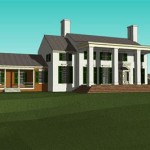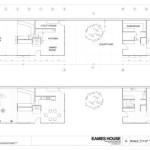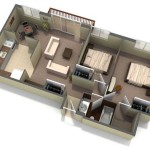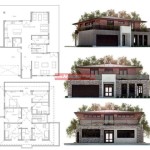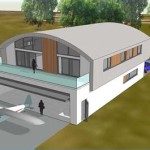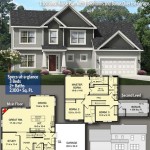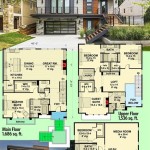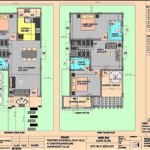Frank Lloyd Wright Robie House Floor Plan: An Architectural Examination
The Robie House, designed by Frank Lloyd Wright and completed in 1910, stands as a quintessential example of Prairie School architecture. Its floor plan, a crucial element of its design, reflects Wright's philosophy of organic architecture, emphasizing the harmony between the built environment and the natural world. A careful examination of the Robie House floor plan reveals Wright's innovative approach to space, function, and the integration of the structure within its landscape.
The house is organized horizontally, echoing the vast, flat prairies of the American Midwest. Long, low rooflines, cantilevered overhangs, and ribbon windows contribute to this horizontal emphasis, visually extending the structure across the site. This horizontal flow is mirrored in the interior through the open floor plan, which minimizes traditional walls and allows spaces to flow seamlessly into one another.
The principal floor of the Robie House is elevated above the ground, creating a sense of privacy and separating the living spaces from the street level. This elevation also enhances the connection with the surrounding landscape, allowing views to extend outward from the main living areas. The entrance, intentionally obscured and tucked away, guides visitors through a compressed space before opening into the expansive main living area.
The heart of the Robie House is the open-plan living and dining area. This large, central space is the focal point of the home, designed for family gatherings and social interaction. Fireplaces, strategically placed within the space, serve as anchoring elements and define distinct zones within the open plan. The absence of conventional walls allows for unobstructed views across the space and promotes a sense of visual continuity.
Wright's innovative use of the cantilever is evident in the projecting roofs and balconies, which extend outwards, seemingly defying gravity. These cantilevered elements not only contribute to the horizontal emphasis of the design but also provide shaded outdoor spaces, blurring the lines between the interior and exterior. The cantilevers, a defining characteristic of Wright's Prairie School style, create a sense of dynamism and visual interest.
The Robie House floor plan incorporates a clear separation between public and private spaces. The main living area, dining area, and guest areas are situated on the principal floor, while the bedrooms and more private family spaces are located on the upper level. This separation allows for a distinct hierarchy of spaces, catering to different functional needs and levels of privacy.
Natural light plays a crucial role in the Robie House design. The extensive use of art glass windows, featuring geometric patterns and abstract designs, filters light into the interior, creating a warm and inviting atmosphere. Clerestory windows, located high on the walls, further enhance the natural illumination, bringing light deep into the interior spaces.
The use of natural materials, such as brick, wood, and stone, is another hallmark of Wright's organic architecture. These materials, chosen for their inherent beauty and durability, contribute to the overall aesthetic of the house and connect it to its natural surroundings. The warm tones of the brick and wood create a sense of warmth and comfort.
The Robie House floor plan demonstrates Wright's mastery of spatial organization and his innovative approach to residential design. The open floor plan, the integration of indoor and outdoor spaces, and the emphasis on natural light and materials create a harmonious and functional living environment. The design principles embodied in the Robie House continue to influence contemporary architecture, showcasing the enduring legacy of Frank Lloyd Wright.
The furniture within the Robie House was also designed by Wright, specifically to complement the architecture and enhance the overall aesthetic. These built-in furnishings, seamlessly integrated into the structure, contribute to the unified and harmonious feel of the interior. The furniture designs reflect the same geometric motifs and horizontal lines that characterize the architecture.
The Robie House serves not just as a residence, but as a testament to Wright’s vision of organic architecture, where the building is in harmony with its environment and the needs of its inhabitants. The floor plan, a key component of this vision, elegantly illustrates how Wright translated his philosophical principles into a built reality.
By studying the Robie House floor plan, one gains a deeper understanding of Wright's design philosophy and his innovative approach to residential architecture. It showcases his ability to create spaces that are both functional and beautiful, blurring the lines between the built environment and the natural world. The influence of this iconic design can still be seen in contemporary architecture, highlighting its enduring significance.

Ad Classics Frederick C Robie House Frank Lloyd Wright Archdaily

Ad Classics Frederick C Robie House Frank Lloyd Wright Archdaily

Floor Plan Of The Robie House Frank Lloyd Wright Hyde Park Illinois 1909 Prairie

Frank Lloyd Wright S Frederick C Robie House A Prairie Masterpiece The Craftsman Bungalow

Ad Classics Frederick C Robie House Frank Lloyd Wright Archdaily

Gallery Of Ad Classics Frederick C Robie House Frank Lloyd Wright 10

1 3 Second Main Floor Plan Frederick C Robie House 5757 Woodlawn Avenue Chicago Cook County Il Library Of Congress

Gallery Of Ad Classics Frederick C Robie House Frank Lloyd Wright 9

Frank Lloyd Wright S Frederick C Robie House A Prairie Masterpiece The Craftsman Bungalow

Pin By Arif Shurdho On Homes Frank Lloyd Wright Robie House

